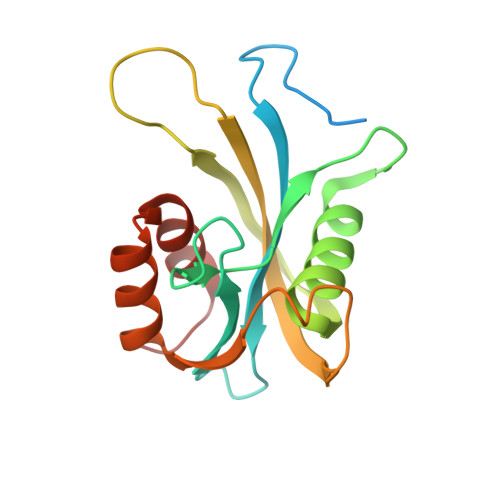Multiple substrate recognition by yeast diadenosine and diphosphoinositol polyphosphate phosphohydrolase through phosphate clamping.
Marquez-Monino, M.A., Ortega-Garcia, R., Shipton, M.L., Franco-Echevarria, E., Riley, A.M., Sanz-Aparicio, J., Potter, B.V.L., Gonzalez, B.(2021) Sci Adv 7
- PubMed: 33893105
- DOI: https://doi.org/10.1126/sciadv.abf6744
- Primary Citation of Related Structures:
7AUI, 7AUJ, 7AUK, 7AUL, 7AUM, 7AUN, 7AUO, 7AUP, 7AUQ, 7AUR, 7AUS, 7AUT, 7AUU - PubMed Abstract:
The yeast diadenosine and diphosphoinositol polyphosphate phosphohydrolase DDP1 is a Nudix enzyme with pyrophosphatase activity on diphosphoinositides, dinucleotides, and polyphosphates. These substrates bind to diverse protein targets and participate in signaling and metabolism, being essential for energy and phosphate homeostasis, ATPase pump regulation, or protein phosphorylation. An exhaustive structural study of DDP1 in complex with multiple ligands related to its three diverse substrate classes is reported. This allowed full characterization of the DDP1 active site depicting the molecular basis for endowing multisubstrate abilities to a Nudix enzyme, driven by phosphate anchoring following a defined path. This study, combined with multiple enzyme variants, reveals the different substrate binding modes, preferences, and selection. Our findings expand current knowledge on this important structural superfamily with implications extending beyond inositide research. This work represents a valuable tool for inhibitor/substrate design for Sc DDP1 and orthologs as potential targets to address fungal infections and other health concerns.
Organizational Affiliation:
Department of Crystallography and Structural Biology, Institute of Physical-Chemistry Rocasolano, CSIC, Serrano 119, 28006 Madrid, Spain.
















